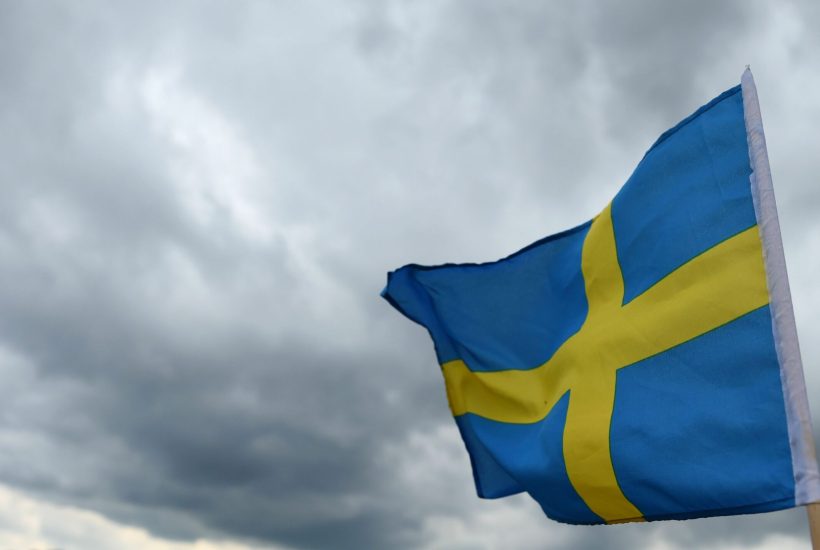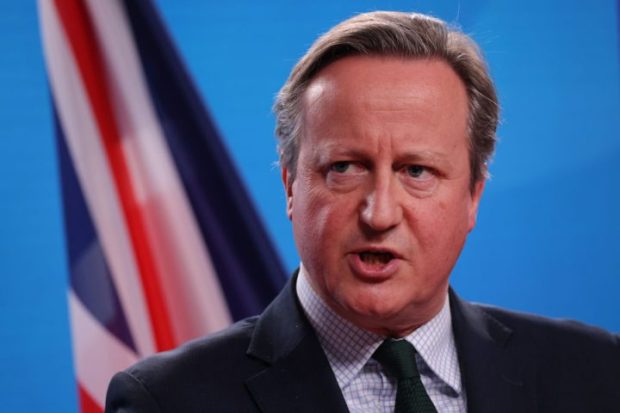Should Britain return to a form of lockdown — the logical conclusion of a suppression strategy — or should we adopt a different approach, one that looks more like Sweden? Those in favour of a so-called ‘segmentation strategy’, where the vulnerable are shielded and the rest of us are allowed to continue with our lives unrestricted, often point to the Scandinavian country as an exemplar. It’s an alluring argument, certainly, but one that does not stand up to scrutiny. A sober look at Sweden, in fact, shows that it is far from the great success story some so desperately want it to be.
Supporters of the Swedish approach would correctly point out that, compared to the UK, it has had fewer deaths per million than we have had. Sweden’s strategy has also done less damage to its economy than if it had adopted a more stringent lockdown. But comparing Sweden to Britain only makes sense if you think we have had a particularly successful pandemic. We haven’t. And neither has Sweden when you compare it to its Nordic neighbours: Norway, Finland and Denmark. The worst performing of those, Denmark, suffered 109 Covid-19 deaths per million people between 13 February and 19 September; Sweden lost 574 lives per million people over the same period. Covid cost Denmark 7.4 per cent of GDP in the second quarter of 2020; Sweden sacrificed 8.6 per cent of its GDP.
What’s more, a closer inspection of Sweden’s death data reveals something else. While the UK lost 626 lives per million to Covid-19 from 13 February to 19 September, our fatalities were more front-loaded than Sweden’s. In other words, Britain had fewer deaths per capita than Sweden after lockdown had made its impact. Both countries had an early surge in infections prior to their respective restrictions kicking in. Our lockdown brought initially higher fatality numbers down to a level lower than Sweden’s. The people who died here in April were overwhelmingly infected in the weeks and months before lockdown was introduced in late March. Their fates, sadly, had already been sealed by that point.
From 10 May onwards, however, things changed: the UK and Sweden reported 163 and 235 deaths per million respectively. The numbers swung even further in the UK’s favour a month later: from 7 June the UK reported 50 Covid-19 deaths per million, compared to 103 in Sweden.
Another factor that has undoubtedly helped Sweden has had little to do with policy interventions. It should not need to be said, but sadly much of the discourse around Sweden is so rose-tinted that it really does — the reason why the virus was much more widespread in the UK than it was in Sweden is because we have many more foreign visitors. London, in particular, is a major hub for global commerce, business, tourism and travel. The UK had 36.3 million international travellers in 2018 compared to Sweden’s 7.4 million.
Sweden has an array of other inbuilt advantages: its relatively low population density compared to other wealthy European nations (England is 17 times more densely populated) being the most obvious. While 40 per cent of adults live alone, compare that to just 15 per cent in the UK. These factors gave Sweden a huge advantage long before the virus ever appeared on its shores. Interpersonal interactions, after all, are how the virus spreads: reduce them and you reduce the number of infections.
Those in favour of the Swedish approach often make another point: Swedes are freely living their lives to the full, so why can’t we emulate them? This argument, I’m afraid, does not stand up to scrutiny. You see, the authorities there didn’t need to order people to stay at home to reduce their contacts, Swedes just do it anyway. Data on mobility shows that the populations of Sweden and the UK reduced their movements and interactions by a similar amount at the start of the pandemic. The difference? We were compelled to do it. So the question then becomes whether that was really necessary. To answer that question, just look at British behaviour on current trends: non-compliance with the rules on mixing, lack of compliance regarding isolating, and lack of compliance around quarantining after holidays, to name just a few. The result? The NHS is seriously contemplating the scenario that it could run out of hospital beds before Christmas. So yes, depressing though it is, compulsion probably is necessary.
Unlike in the UK and many other countries, these are not political decisions. Sweden’s public health agency, Folkhälsomyndigheten, is in the driving seat when it comes to these matters in a way that professors Whitty and Vallance are not, despite what many people seem to think. The state epidemiologists advised the public to avoid non-essential travel, to work from home where possible and to avoid visiting the elderly in hospitals or care homes. And the Swedes, on the whole, complied like diligent citizens. Ticket sales at the national rail operator fell by 77 per cent and the tourism industry took a substantial hit. Attendance at cinemas almost completely stopped. Indeed, Filmstaden, the country’s largest chain of picture houses closed voluntarily because of the lack of paying customers.
There is one thing we should have done that they did: keeping schools open for children under 15. We got that wrong and, fortunately, it doesn’t look like we will make the same mistake again.
There is very little evidence that kids of that age are engines of coronavirus spread, something that can’t be said for their older siblings. When this was decided, it was done so in the absence of any evidence either way on whether children were effective spreaders in the way they most certainly are for flu. Sweden took a big gamble with people’s lives, but one that paid off.
It is also a mistake to think that the Swedes take civic responsibility without any threat of punishment if they don’t. For instance, those who run bars, cafés or restaurants are responsible for social distancing inside their premises, just like British owners are. But in Sweden they are also responsible for what goes on outside, too. Local authorities close down those that get it wrong. How many times have you heard of that happening in the UK? We regularly hear prominent voices from the hospitality industry calling for us to ‘go Swedish’. Imagine the howls of indignation if businesses were shut here for failing to control their customers.
Another complaint often made is that Sweden is less restrictive when it comes to public gatherings, initially limiting them to 500 but subsequently lowering them to a maximum of 50 (a tacit acknowledgement of the role such events play in driving infections). England’s ‘rule of six’ has recently superseded a limit of 30, but unlike in Sweden we have never needed to apply to the police for a permit. In Sweden, applying for a permit costs 320 krona (£28) — and there is no guarantee of getting it. While it’s true that this limit does not apply to private events, no house of worship in Britain has had to explain itself to the local constabulary before opening its doors; they have to be Covid secure, of course, but so does any workplace or business.
This type of state supervision in Sweden seems to get conveniently overlooked. And it’s not just organised gatherings that come under the beady eye of the authorities either. Back in April in Lund, the local council spread chicken manure in a public park in the hope that the stink would stop people gathering to celebrate Saint Walpurgis night. Imagine the disgust and outrage if a local authority did something similar here.
While Swede’s freedoms were not infringed to the same extent as ours during April and May, the increasingly popular notion that life there carried on as normal is nonsense. Their restrictions have, by and large, remained in place over the summer. It is hard to see how they differ all that much from those that were in place over the summer in post-lockdown Britain — restrictions which have landed us in the situation in which we currently find ourselves. Going Swedish seems to have become code for doing nothing, when, in fact, we’ve largely copied them since we emerged blinking from lockdown. This week, for instance, 170,000 citizens in Uppsala, near Stockholm, were asked to work from home, avoid social gatherings, physical contact and public transport. How different is that to regional tiered restrictions in Britain?
Neither is Sweden’s current low number of fatalities evidence of strategic success. If they thought their death level would stay flat without further action, they would not now be asking people to restrict their movements in certain regions.
Comparing national performances on anything other than broad timescales is a folly: back in April, for instance, people were asking why India had such a low number of infections, but their situation has since deteriorated dramatically. They are now experiencing more than 350,000 confirmed infections a week (they had 640,000 per week during their peak in August), and they have had 120,000 deaths, which many people believe is an underestimate. It would, of course, be easy (though intellectually dishonest) to claim that Sweden is unaffected at the moment, just as many did about India in the spring. But the Swedish government is clearly concerned because it’s taking action. The number of daily cases there has shot up 70 per cent in the last week. If they continue at such levels of growth, then they could very well see a rising death toll. People seem to have forgotten that Covid-19 has a long infection to death time lag.
It has also become popular to talk about herd immunity when Sweden is discussed. Advocates of this notion try to piggyback on the perception that Swedes are living life unperturbed by coronavirus and that it is a pity we are not so enlightened here. This is intellectually dishonest, for Swedish health authorities have flatly denied that it was ever their strategy.
Just this week, in fact, Sweden’s state epidemiologist Anders Tegnell warned that chasing herd immunity is both ‘futile and immoral’ without a vaccine. He is not wrong, of course. Just look at Italy: Lombardy, which was the hardest-hit area in March, is suffering severely once again. The mounting body of evidence that antibody prevalence decreases over time is regularly countered with claims about ‘long-term immunity’ and T-cell immunity (often from people who don’t know what they are or what they do). Such claims are little more than clutching at straws: nobody knows how long T-cell responses last for (hint: they can dwindle too).
Those pushing herd immunity want people to think that it could be the route out of the Covid crisis, when, in fact, it’s more likely to prolong the nightmare. Just think for a second what such a strategy would actually look like. We would end up in a situation like that currently being faced in parts of Belgium — hospitals are under such pressure that drugs are being rationed and doctors have been issued with guidance on who is eligible for treatment. All this is before we consider what effect it would have on NHS staff who would also become unwell and unable to tend to the sick.
A colleague at another university recently remarked to me that even if we turbocharge credulity and imagine that it could work, it would cause years of cyclical outbreaks with intensive care facilities fighting a lengthy war of attrition as the virus works its way through society. Such units would regularly be swamped with patients whose immune systems have gone haywire and attacked them (don’t forget, it’s not a disease that just leaves people struggling to breathe), leaving few beds — if any — for anyone else.
Immunocompromised cancer patients, most of whom are treated as outpatients would supposedly be shielded. But what about the other members of their households? And what happens when they need to see a GP about a complication or get their blood taken for analysis prior to another round of chemotherapy? They would be at the mercy of a virus that would have become so commonplace in society that they’re odds-on to contract it sooner or later. And because the chemo has compromised their immune system, the chances that it would kill them have increased dramatically.
But it’s not just those on the libertarian right who have been eulogising about other countries’ pandemic responses, under the bizarre belief that they can easily be transplanted from one country to another. The left in Britain is currently in love with a rather different country, New Zealand. Amid the hyperbole about female leadership providing a better pandemic response, the fact is that New Zealand reacted with an impressive turn of speed to the developing pandemic. It slapped mandatory quarantine on all visitors and instigated an austere nationwide lockdown with a moratorium on domestic travel. This sort of thing is easier to do in a largely self-sufficient country that is a terminus for international travel routes rather than at the crossroads. And it has, of course, killed their biggest export earner, tourism, which accounts for about 10 per cent of GDP. Overall their hit was 12.2 per cent of GDP between April and June.
You might think that New Zealand’s economic damage hasn’t been all that bad compared to other developed countries, especially given their very low infection and death numbers (fewer than 2,000 diagnosed infections and 25 deaths). But the Prime Minister Jacinda Ardern has set Kiwis on a course to ‘eliminate the virus’. Sounds great, but for how long will she hold that line? In order to sustain its near virus-free status, New Zealand will have to maintain its quarantine system until a vaccine comes along. If we don’t have one any time soon, then she will either have to retreat or keep New Zealand in a semi cut-off twilight zone where its citizens won’t be able to engage fully with the outside world. That really would be a case of the treatment being worse than the disease.
Of course there are aspects of the pandemic handling that should be shared among the international community of nations. Indeed, it appears as though the government’s testing drive has been heavily influenced by South Korea. Test and trace has, so far, been an unmitigated and very expensive disaster. But with a capacity of around half a million tests per day now appearing achievable, if we were able to inflate that further and actually trace people’s contacts properly, we could well be on our way out of the quagmire.
And, make no mistake, getting out of it is very important. We are in an extremely serious situation, despite earlier prophecies that a second wave would be less deadly. Only yesterday new documents from the Scientific Advisory Group for Emergencies revealed that hospital admission levels had exceeded — and daily death count had met — the government’s reasonable worst-case scenario. A scenario that suggests there could be as many as 85,000 deaths over the course of this winter.
This is no longer the time for academic discussions over Sweden — it is time to act. We will be back to the dark days of March and April pretty soon as things stand. The Prime Minister is fond of Churchillian rhetoric but, as the great man used to write on his papers, we need ‘action this day’.
Sweden has been built up to be something that it’s not. The visible differences in the spring — pictures of children going to school and people enjoying restaurants and bars — has convinced frustrated libertarians that Sweden’s choices were all better than ours. Swedes have a deserved reputation for good design, but they do not have a monopoly on wisdom. National differences require different national strategies and there is no low-cost, flat-pack solution to Britain’s Covid difficulties.
Got something to add? Join the discussion and comment below.
Get 10 issues for just $10
Subscribe to The Spectator Australia today for the next 10 magazine issues, plus full online access, for just $10.




















Comments
Don't miss out
Join the conversation with other Spectator Australia readers. Subscribe to leave a comment.
SUBSCRIBEAlready a subscriber? Log in